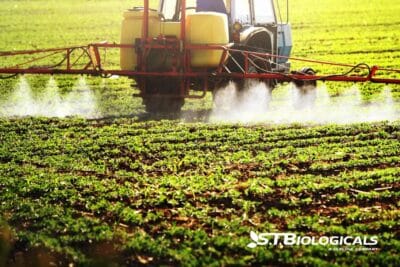Every step of the way, from field prep to delivery to buyer, you want to optimize crop potential. Best practices all season long decrease the amount of loss at harvest.
Precision ag practices need to be augmented with boots on the ground all season. Here are a few tips to maximize your farm revenue potential.
Soil Testing and Plant Tissue Analysis
Before planting any crops in your fields, you need to have your soil tested. When data shows there are variabilities in yield across fields, subdivide those areas and have separate soil tests run. You want to find out why those variabilities exist and how you can fix any soil imbalances.
Along with soil test analysis, it’s good practice to take plant tissue samples for analysis routinely throughout the growing season. For more in-depth coverage of how and why this testing is important, check out this blog post.
Notes, Notes, and More Notes on Field and Crop Conditions
The value of tracking weather, conditions at seed planting, germination, turkey pressure, and all the other everyday farm occurrences you observe and comment on is immeasurable. During a growing season, you’ll have innumerable negative and positive natural influences that ultimately impact the quality and quantity of your harvest.
If you record these seemingly mundane events over three to five years, you’ll begin to see patterns. On fields you’ve plowed and left bare after harvest, you’ll probably see more insect and disease issues with a higher volume of fertilizer and pesticide use. On fields that have had cover crops, you’ll see better water retention, higher-quality crop harvests, and less reliance on synthetics because you’ve got microbes in the soil working for free.
The impact of different ag management practices is seen in those daily recordings. Though taking notes feels like yet another task to add to your already too-busy day, it will become second nature to carry a pen and small notebook. Adding this information to your yield monitoring data will give you answers as to why a part of a field is high or low-performing.
Observation is one of the four basic principles of regenerative agriculture, but it applies to whatever ag practices you’re using. What you see on a daily basis are the effects of biodiversity, or lack of, on your operation. For more information on the impacts of biodiversity, read this blog post.
Harvest Loss Results from Poor Land Management
From season to season, crop management is a continuum. Loss results from poor management at any step of the way. Land management isn’t just from planting to harvest. It includes the between cash crop periods when your fields are either bare (and eroding) or planted to cover crops (and regenerating).
We tend to blame the weather, insect pressure, or disease for crop failures or poor yields. But insects and diseases can’t hurt healthy crops. Land management and crop yields are dependent on how much we pay attention to what the soil and plants are telling us.
A weed infestation in a particular spot in a field tells you a lot about the health of that soil. Going back over your notes, do you see a weed pattern? Have the weeds changed? Weeds are pioneer plants; they like disturbed soil. They’re actually healing that soil. When you begin to use less tillage and synthetics, do you have different weed species? Learning to read your weeds tells you a great deal about the health of your soil and how well any cash crop is going to do.
Making sure your soil is covered at all times is a best practice that is backed by numerous scientific studies. Complex crop rotations are another way to break up insect and disease life cycles.
Growing more than one or two crops also gives you greater market freedom because you’re not dependent on a few dominant futures. Diversity, both biological and financial, creates a resilient ag ecosystem that can profit even under the worst climatic conditions. To find out more about creating a resilient profitable ag operation contact our team at ST Biologicals. We’re here to help you succeed. When soil speaks, we listen.

